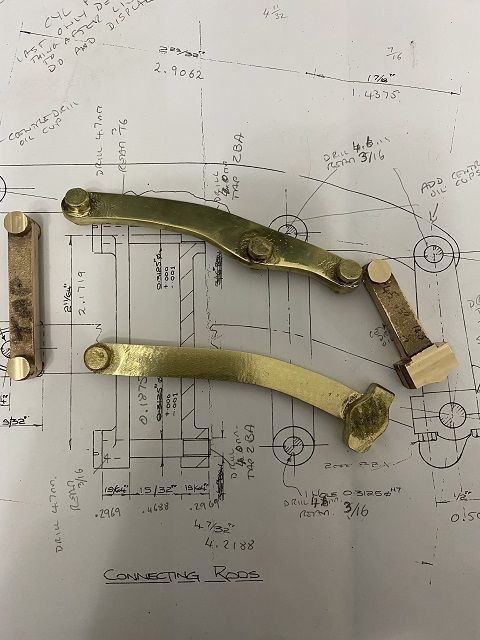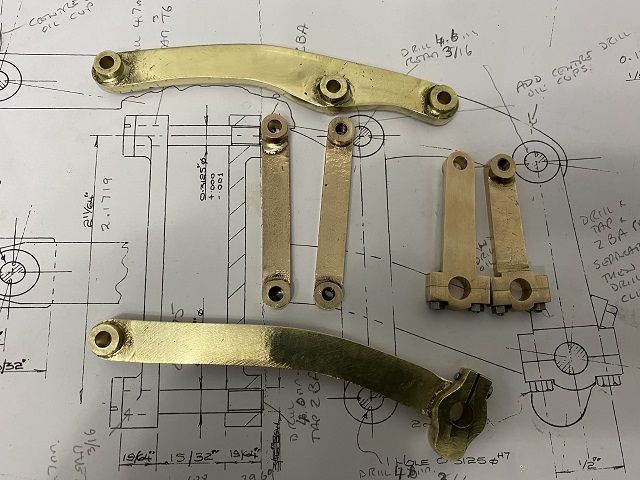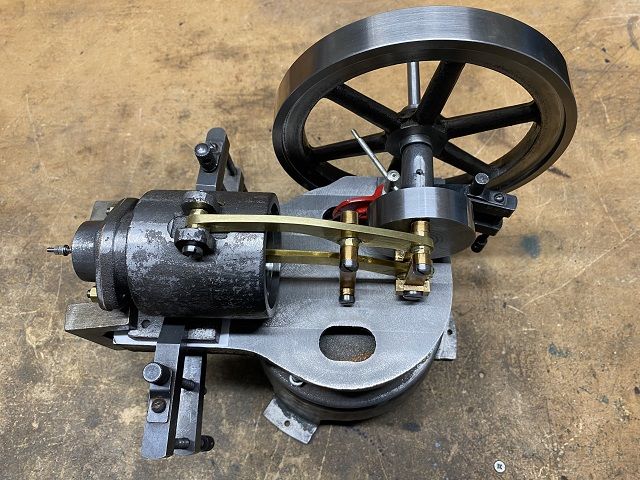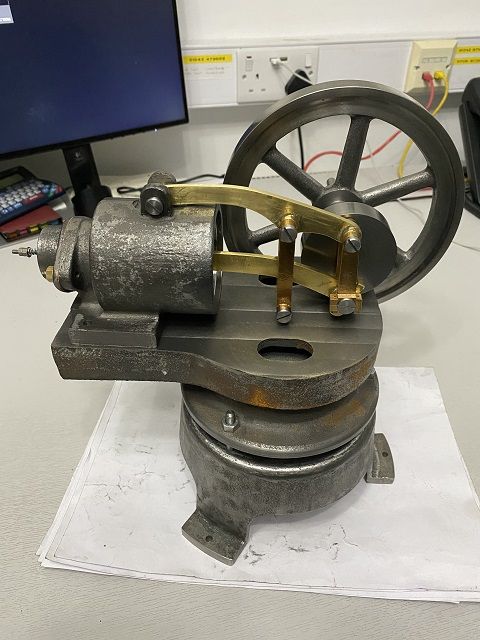Decided to have a go at the Regenerator/Displacement piston. Decided to try the ASDA Salmon tin.
I did not want to cut the tin open and have it deform in any way. Mounted it rim side down in the large indexer and centralixed it with coax centering tool. I did not want to use end mills or wood hole cutters and then remembered I had bought a set of Parkside diamond hole cutters from LIDL a year or so ago.

Had a look at these and they were nicely sized so picked 1/2" one and put a hole in the centre. It cut a nice clean hole. Off set the indexer by 1" in the Y axis, set indexer to 72 degrees and worked my way round till I had a ring of 5 equidistant holes.

Then removed the juice the salmon was packed with with a small syringe with a large bore needle.

To ensure that the hole in what was to become the bottom was perfectly centered I put a long centering drill in chuck, went down through the salmon layer till touched the bottom of the tin. As soon as I felt the drill go through I stopped. Removed the tin from the chuck and looked at bottom of tin. Realised I had cocked up slightly. The base of the tin had sprung and and although I had stopped as it broke through it had sprung up and the centre drill had left a larger hole than required.  Luckily I had prepared for such eventualities by buying a second can of salmon.
Luckily I had prepared for such eventualities by buying a second can of salmon. 
Repeated the exercise only this time used a 3.5mm drill to give hole size required.
Turned the can over and repeated to put another 5 holes but offset 36 degrees to the set on the other side.
Then spend 15 minutes removing the contents of the can and throwing in the bin. I did not think the cats would appreciate swarf from the diamond cutter in their tea.  ” src=”http://www.modelenginemaker.com/Smileys/default/smiley.gif” title=”Smiley” />
” src=”http://www.modelenginemaker.com/Smileys/default/smiley.gif” title=”Smiley” />


So now we have a regenerator/displacement piston with no soldering (silver or otherwise).  I now need to turn down the rod on which the displacer is fitted and make a small shouldered washer for the top of the can. Will also put a thin sleeve inside to separate the stainless steel mesh from the rod location to aid assembly.
I now need to turn down the rod on which the displacer is fitted and make a small shouldered washer for the top of the can. Will also put a thin sleeve inside to separate the stainless steel mesh from the rod location to aid assembly.
Next step is power cylinder.
Colin
Colin Heseltine.




 and wondering why it appeared to be at an angle. Bugger
and wondering why it appeared to be at an angle. Bugger  Luckily was able to get the miniature boring head to bore the holes out from the required 0.250" up to just under 0.2812 (9/32"
Luckily was able to get the miniature boring head to bore the holes out from the required 0.250" up to just under 0.2812 (9/32"















 Luckily I had prepared for such eventualities by buying a second can of salmon.
Luckily I had prepared for such eventualities by buying a second can of salmon. 
 ” src=”
” src=”

 I now need to turn down the rod on which the displacer is fitted and make a small shouldered washer for the top of the can. Will also put a thin sleeve inside to separate the stainless steel mesh from the rod location to aid assembly.
I now need to turn down the rod on which the displacer is fitted and make a small shouldered washer for the top of the can. Will also put a thin sleeve inside to separate the stainless steel mesh from the rod location to aid assembly.







 ” src=”
” src=”



















